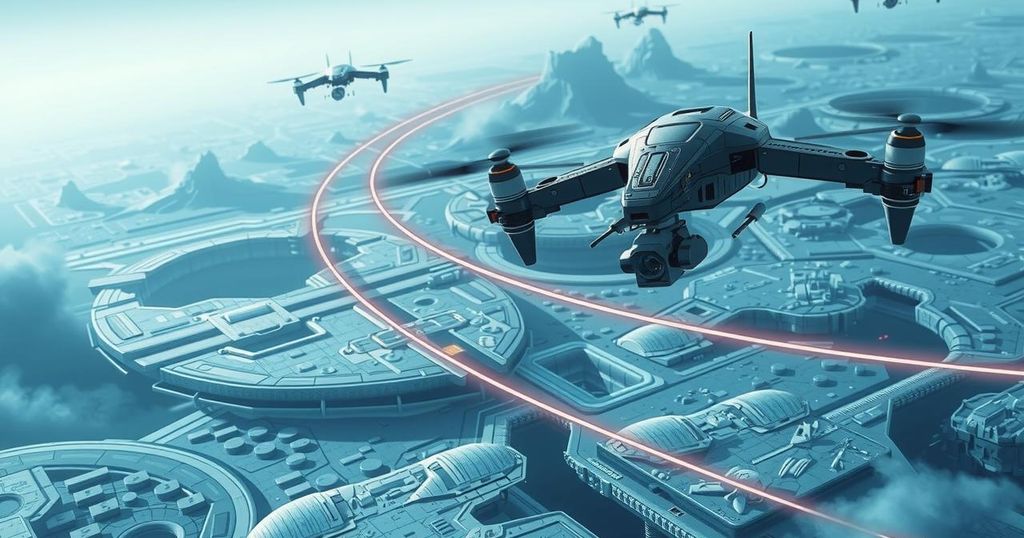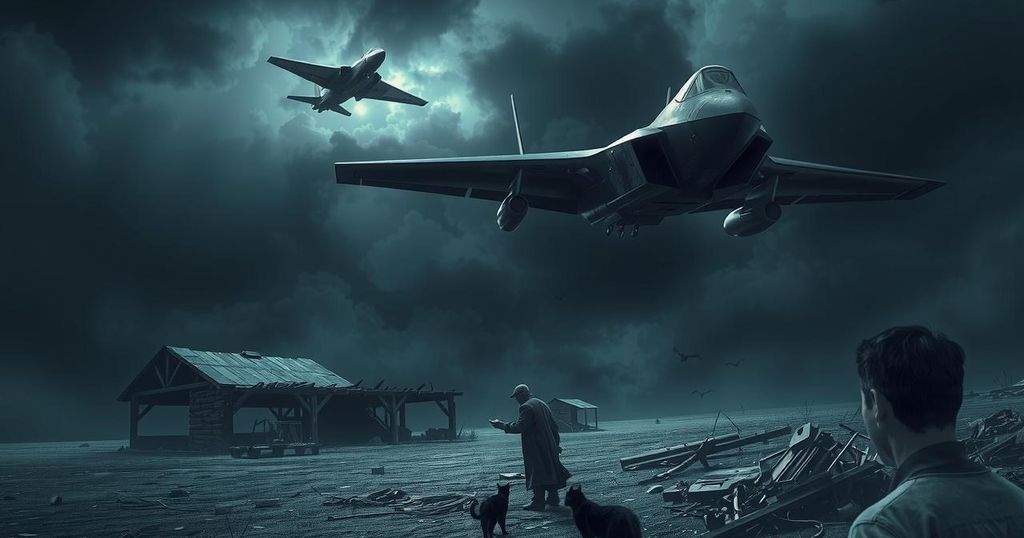Hyperwar, Artificial Intelligence, and the Evolution of Warfare
The article explores how warfare is evolving with the integration of artificial intelligence and autonomous systems, signaling a shift towards ‘hyperwar,’ where traditional human decision-making roles may become obsolete. Highlighting recent military conflicts and technological advancements, it underscores the importance of data in this new paradigm. Collaboration between major military powers like the US and Turkey could play a key role in shaping future warfare strategies as these changes unfold.
War has always been a peculiar dance of minds and machines, with Napoleon famously stating that, ‘an army marches on its stomach.’ But dig deeper, and you’ll find it’s also about how we think. Consider a Napoleonic artillery officer, furiously calculating a target’s distance. This task involves the prefrontal cortex and its trio of control, short-term memory, and logical arithmetic. But it’s not just a think piece; it operates off data from the premotor-parietal system and the knowledge locked in the hippocampus. Intriguingly, even contemporary pilots, like those flying F-35s, rely on similar brain functions, just turbocharged with technology.
As we find ourselves on the brink of what could be the most significant shift in warfare, AI is starting to eclipse the brain’s traditional roles. Imagine a future where the parietal and prefrontal systems are relegated to the sidelines, while machine algorithms steer operations and strategies in battle. This evolution suggests that neural networks may reshape not only how we fight but also who gets to make those decisions. The advent of autonomous weaponry means that the human touch could get sidelined, making way for an era dominated by smart machines.
In a thought-provoking piece for the US Naval Institute, Marine Corps General John Allen and tech entrepreneur Amir Husain introduced the term “hyperwar.” They indicated that upcoming conflicts will heavily minimize human decision-making roles. The age of hyperwar will likely herald robotic swarms and AI strategies that reformulate the way we engage in combat. This pattern echoes past revolutions in warfare, like the Germans’ blitzkrieg, which blended technology in unprecedented manners. Naturally, the winners and losers will reflect disparities reminiscent of Saddam’s forces facing the high-tech weaponry of the West, particularly around electronic control and precision tech.
Look at the ongoing Russo-Ukraine war, where it’s become a live testbed for these futuristic warfare elements. The integration of satellite intelligence has given Ukrainian forces crucial leverage, especially regarding target acquisition. They’ve employed neural networks to analyze social media and public data, transforming it into actionable intelligence. In fact, this use of data has significantly improved drone targeting abilities, turning ordinary operations into precise strikes, as seen with advanced UAVs like the American Switchblade and the Russian Lancet-3.
The current trajectory of data production is staggering, a clear fuel for hyperwar advancement. In just a decade, global data generation has skyrocketed from 4.4 zettabytes in 2013 to an expected 180 zettabytes this year. With warfare relying progressively on autonomous systems, this intense data growth isn’t merely a background detail; it’s at the very core of future conflicts. The digital and drone landscape is likely to evolve in tandem, with both elements fueling hyperwar’s emergence.
But it doesn’t stop within Earth’s atmosphere! Warfare is looking to the stars, where orbital and space battles are becoming the next frontiers. US space operations face different technical hurdles compared to ground battles, with satellites needing serious protection from hostile actions. Creative minds in America are exploring concepts like “bodyguard satellites,” with AI being key to monitoring and protecting key orbital slots.
Humans and animals have long fought alongside one another, and this relationship is evolving again. We’ve adapted both horses and dogs to our combat needs, tweaking their decision-making through selective breeding over generations. These animal companions have played roles from centuries past, still holding military significance today—like the Belgian Malinois involved in crucial operations against high-profile targets.
Today, AI’s encroachment into warfare might parallel our historical manipulation of domesticated animals, yielding tools beyond our current understanding. Combat estimations now balance the human intellect against rapidly evolving machine decision-making. So while humans have taken center stage in past conflicts, the rise of hyperwars might rethink how central we actually are in this twisted narrative.
There’s a heavy implication for defense partnerships as well. The US and Turkey, two of NATO’s heavyweights, already excel in drone warfare. Collaborating and sharing insights to combat evolving threats could pave the way for both nations to improve their operational strategies. Tapping into Ukraine’s recent experiences with drone warfare could be instrumental in building a consolidated approach to these next-generation conflicts, particularly in how to leverage AI capabilities for defense.
In summary, hyperwar may well redefine modern conflicts. As nations tap into AI and advanced technologies, the balance of power in warfare seems poised for a shake-up. While the path ahead may foster innovation, it’s crucial to monitor how relationships between humans and machines unfold and impact our very way of fighting.
In conclusion, the landscape of warfare is on the brink of a monumental shift towards hyperwar, where artificial intelligence and autonomous systems promise to reshape the very fabric of combat. As historical and modern parallels show, the reliance on technological advancements signals a move away from human-led decision-making in conflicts. Countries like the US and Turkey stand to gain significantly from collaborating in this emerging environment, especially in responding to evolving threats. It’s clear that as technology races ahead, so too must our understanding and adaptation to the roles and implications of these innovations in war.
Original Source: www.atlanticcouncil.org




Post Comment